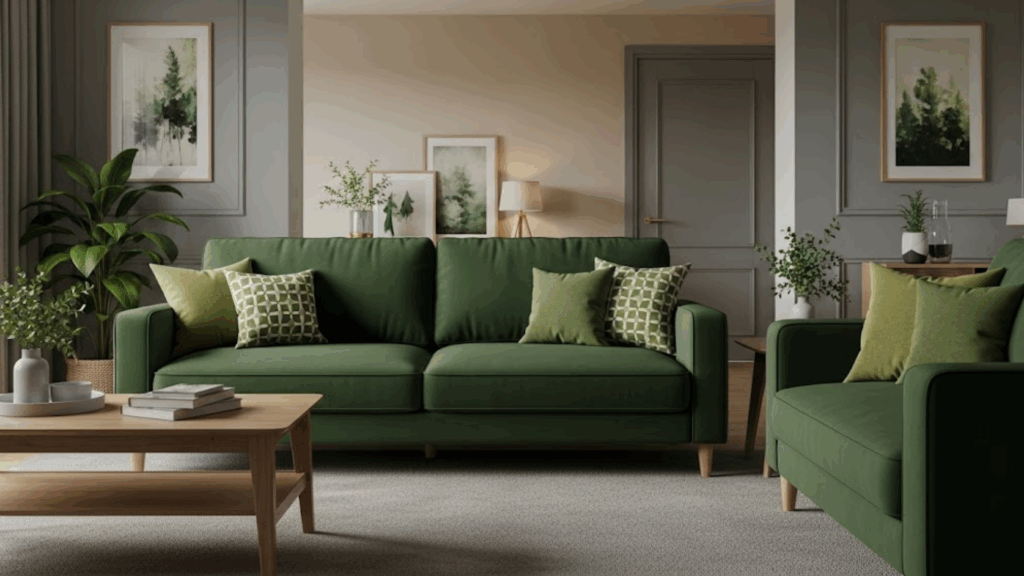As someone who has spent years experimenting with different interior design trends, I’ve come to appreciate the influence that colors have in transforming a space.
For a long time, gray, beige, and white have been the go-to neutrals, creating calm, versatile backdrops in homes. However, I’ve recently noticed a shift that green is emerging as a new neutral.
Traditionally thought of as a bold accent color, green is now making its way into larger design elements, such as walls, furniture, and cabinetry.
It offers the same warmth and balance that we’ve come to expect from beige and gray, but with a more natural and refreshing twist.
But can green truly replace the traditional neutrals, or is it just a temporary trend? Let’s explore how green is fitting into the neutral category and whether it could be the future of interior design.
Why Green Is the Perfect Neutral
Green, once an accent color, has evolved into a versatile design choice. It offers the neutral warmth, depth, and flexibility we appreciate in gray and beige, but with an added natural, calming quality.
This shift reflects how green can now work as a full backdrop in modern interiors.
Green as a Versatile Background
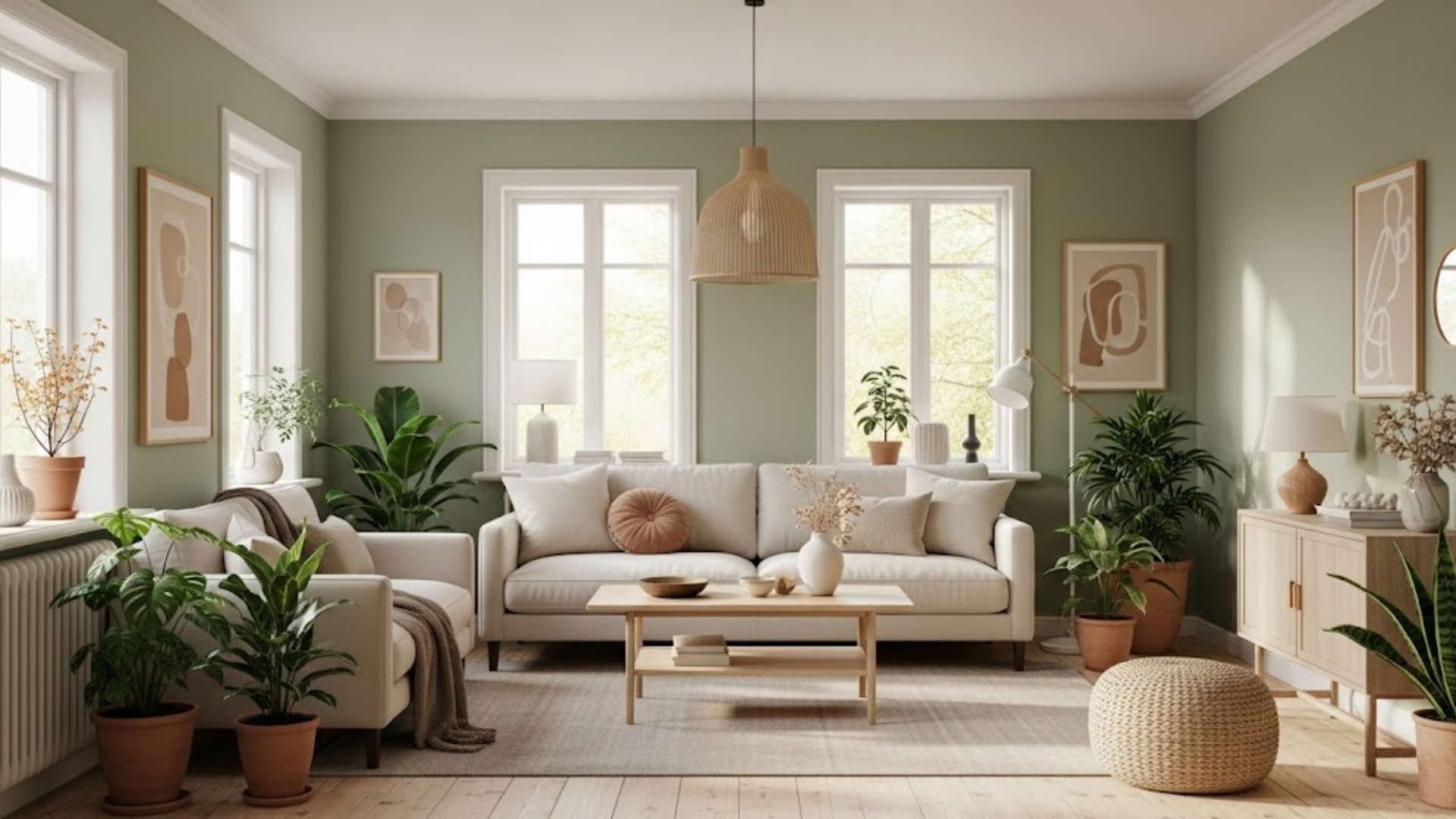
When I think of a room feeling cozy and grounded, I think of how green works as a backdrop. It blends effortlessly with other colors, allowing you to play with textures, patterns, and other hues.
I’ve seen how a soft sage or olive green wall can anchor a room, providing just the right amount of calm and warmth without taking over.
Green’s ability to support other colors and materials without overwhelming the space makes it the perfect foundation for a serene, welcoming room.
Green’s Subtle Sophistication
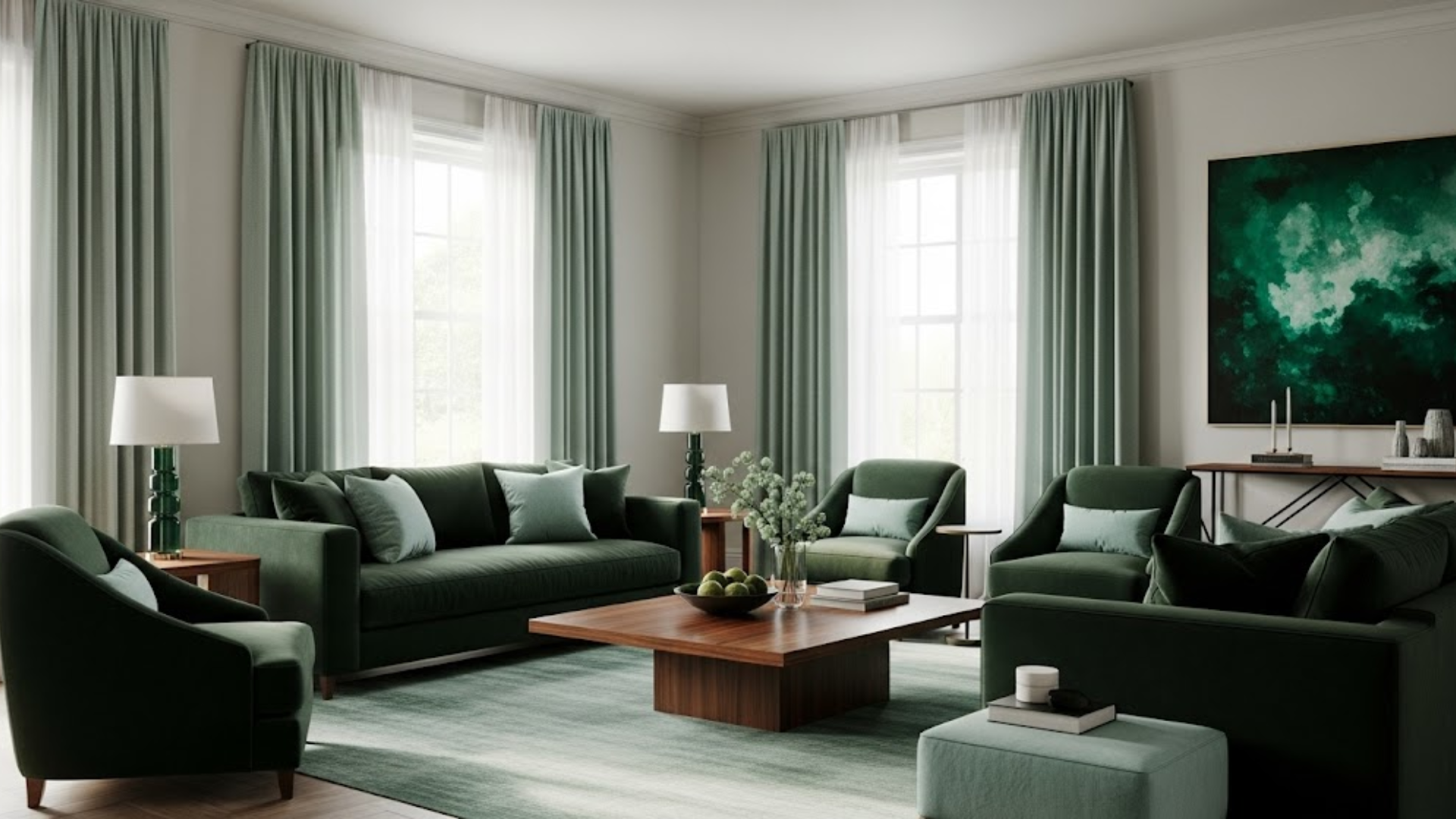
What stands out about green as a neutral is its ability to add richness and elegance to a room without feeling too formal.
While some colors may demand your attention, green quietly brings depth. I’ve found that deeper shades like forest green create a luxurious feel, while softer greens like mint or seafoam add a touch of subtlety and fresh charm.
Green’s versatility in how it can be bold yet understated makes it an ideal neutral choice.
How Does Green Compare to Traditional Neutrals?
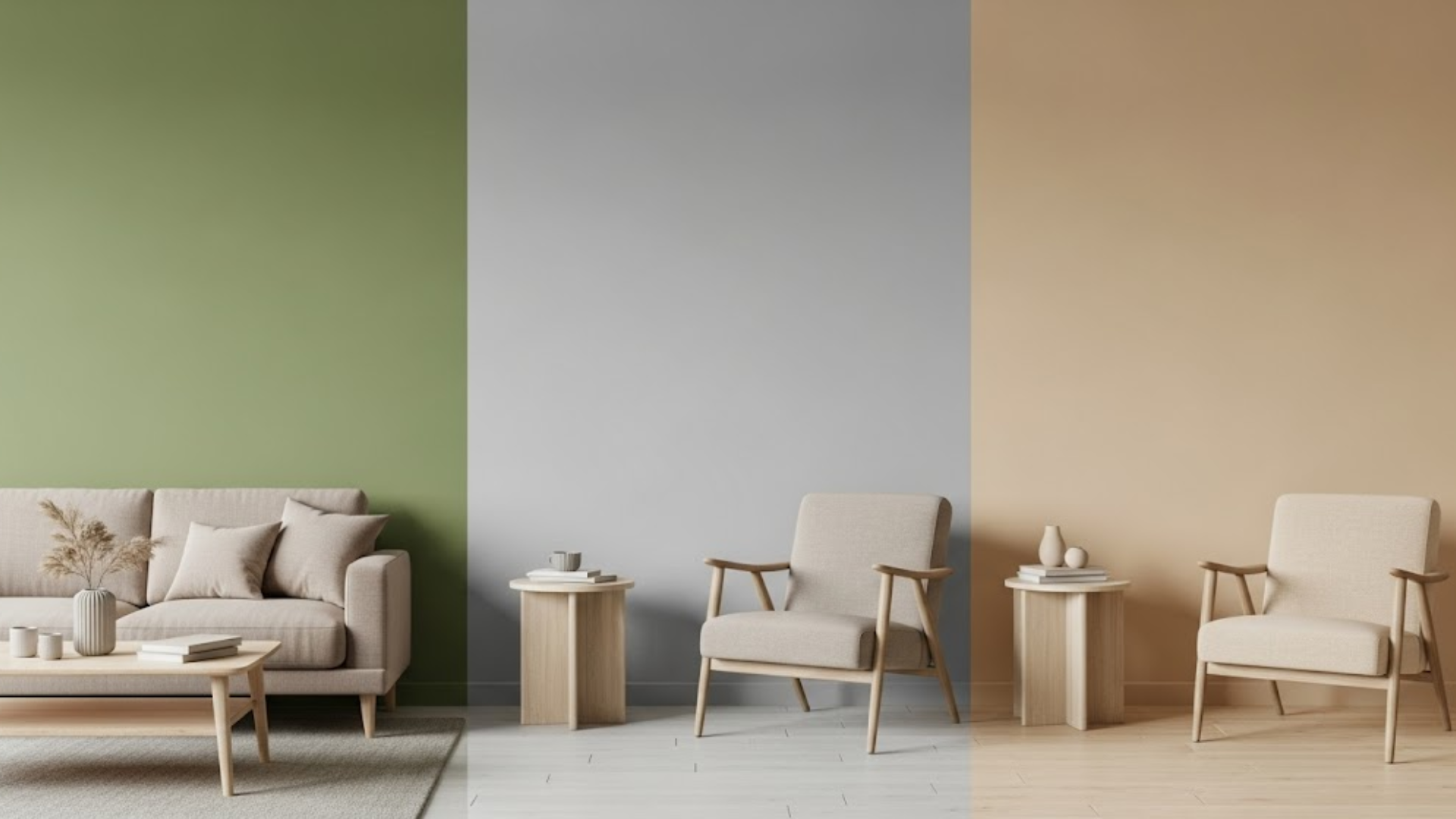
Green offers a warmer, more dynamic alternative to traditional neutrals, such as gray and beige. While gray tends to be cool and reserved, green introduces natural warmth and versatility.
Beige, often soft, can feel flat, whereas green adds energy, depth, and a refreshing organic touch to any space.
Green vs. Gray: The Cool vs. The Warm
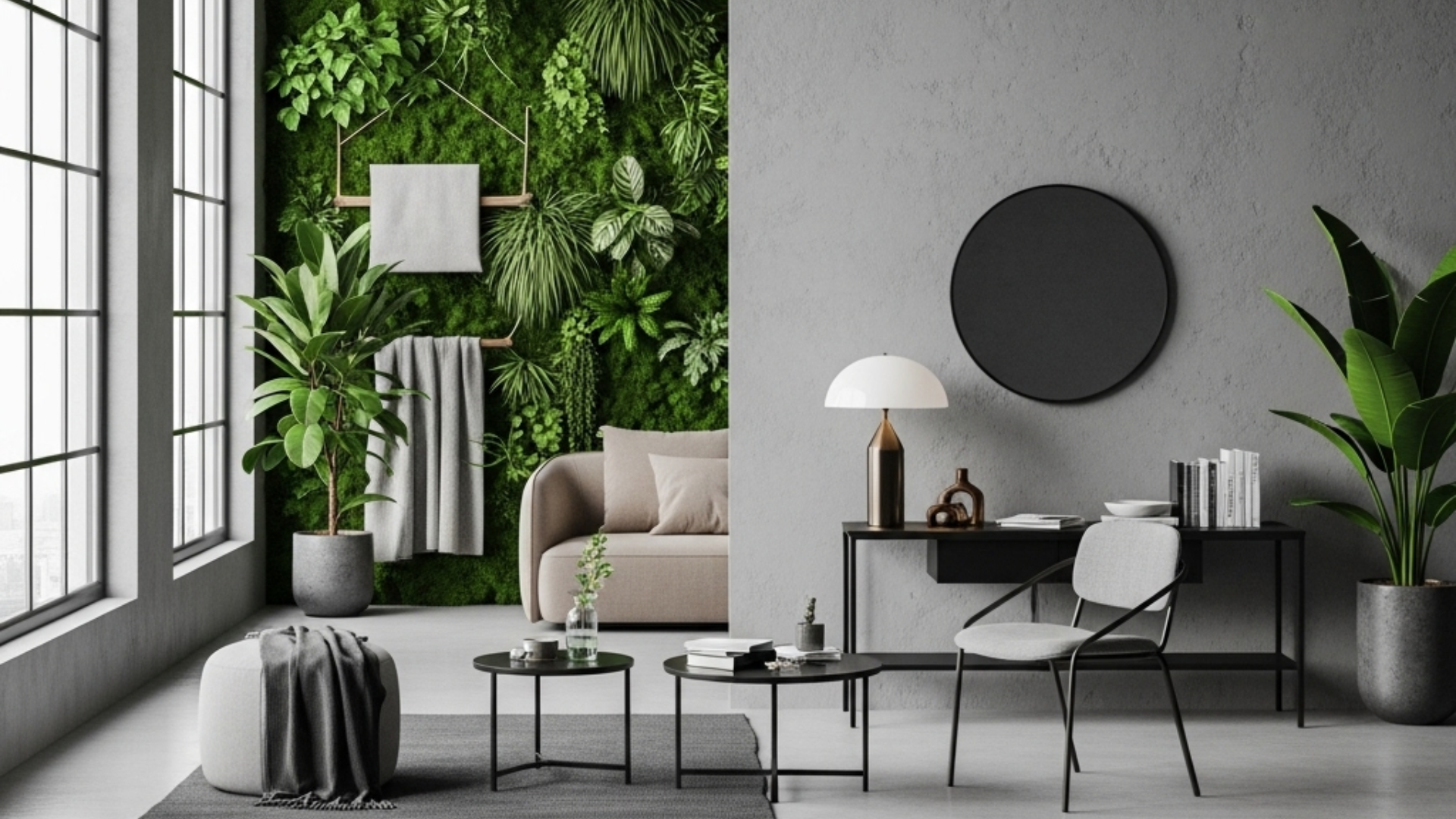
| Feature | Green | Gray |
|---|---|---|
| Tone | Cool, refreshing, and earthy | Warm, neutral, and calming |
| Vibe | Relaxing, nature-inspired | Sophisticated, modern |
| Best for | Bedrooms, living rooms, kitchens, bathrooms | Living rooms, offices, bedrooms, kitchens |
| Pairing Options | Soft neutrals, warm wood tones, muted colors | Bold accents, soft pastels, metallics |
| Emotional Impact | Calming, rejuvenating | Balanced, grounded |
| Lighting | Best in natural light for vibrant effect | Works well in both natural and artificial light |
Green vs. Beige: The Soft Classic vs. The Earthy Tone
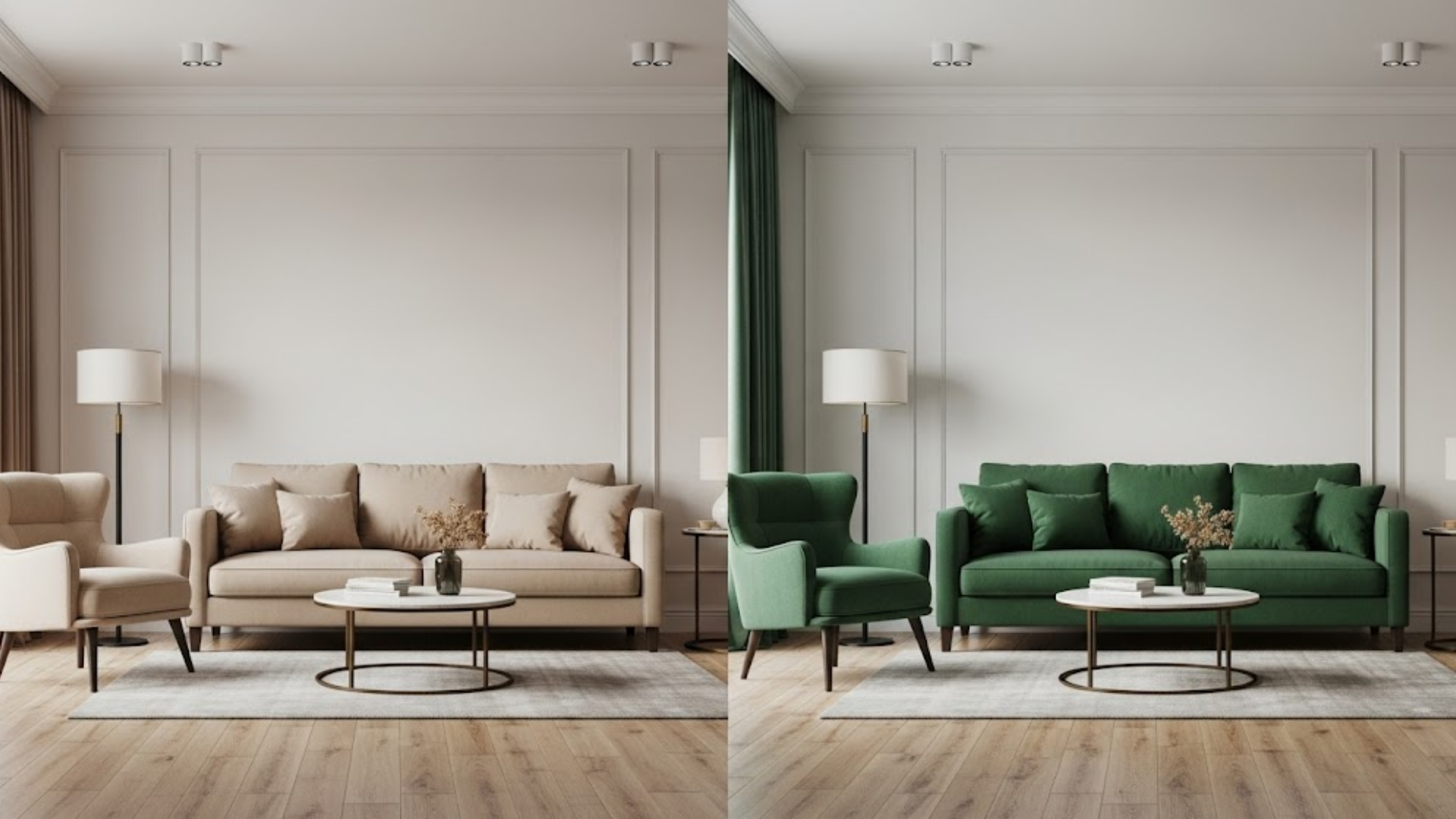
| Feature | Green | Beige |
|---|---|---|
| Tone | Soft, natural, and refreshing | Warm, neutral, and timeless |
| Vibe | Calming, earthy, rejuvenating | Classic, cozy, and sophisticated |
| Best for | Bedrooms, living rooms, bathrooms, and kitchens | Living rooms, bedrooms, offices, entryways |
| Pairing Options | Wood tones, whites, soft neutrals, and other greens | Rich browns, warm whites, soft pastels |
| Emotional Impact | Rejuvenating, peaceful | Welcoming, grounded |
| Lighting | Best in natural light for a vibrant effect | Works well in both natural and artificial light |
How to Incorporate Green as a Neutral in Your Home
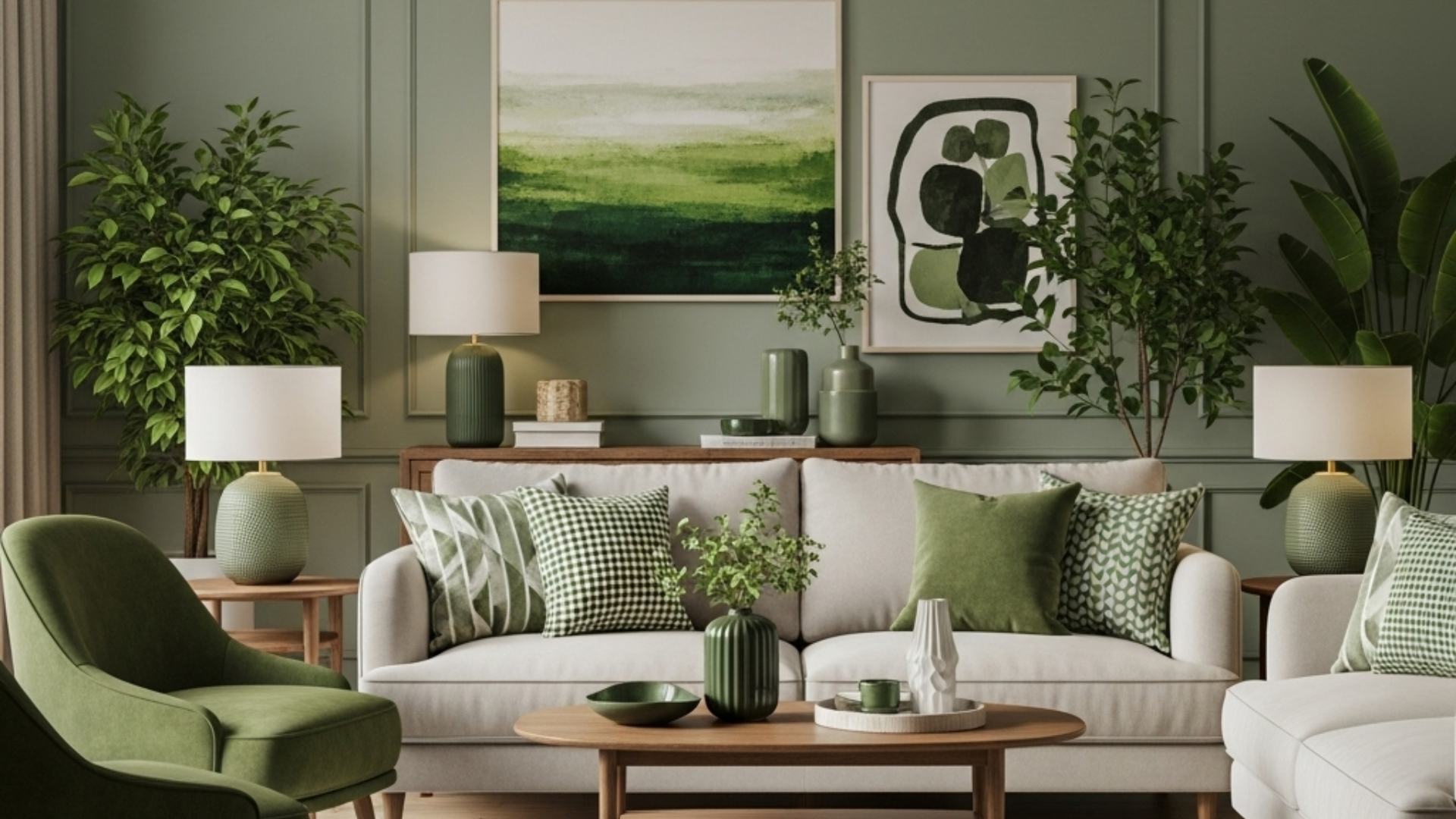
To incorporate green as a neutral, start with walls in soft shades like sage or seafoam for a calming backdrop. Add green furniture, such as sofas or chairs, for warmth and character.
Smaller accents like throw pillows, rugs, and plants also bring nature’s touch while maintaining a neutral aesthetic.
1. Green Walls
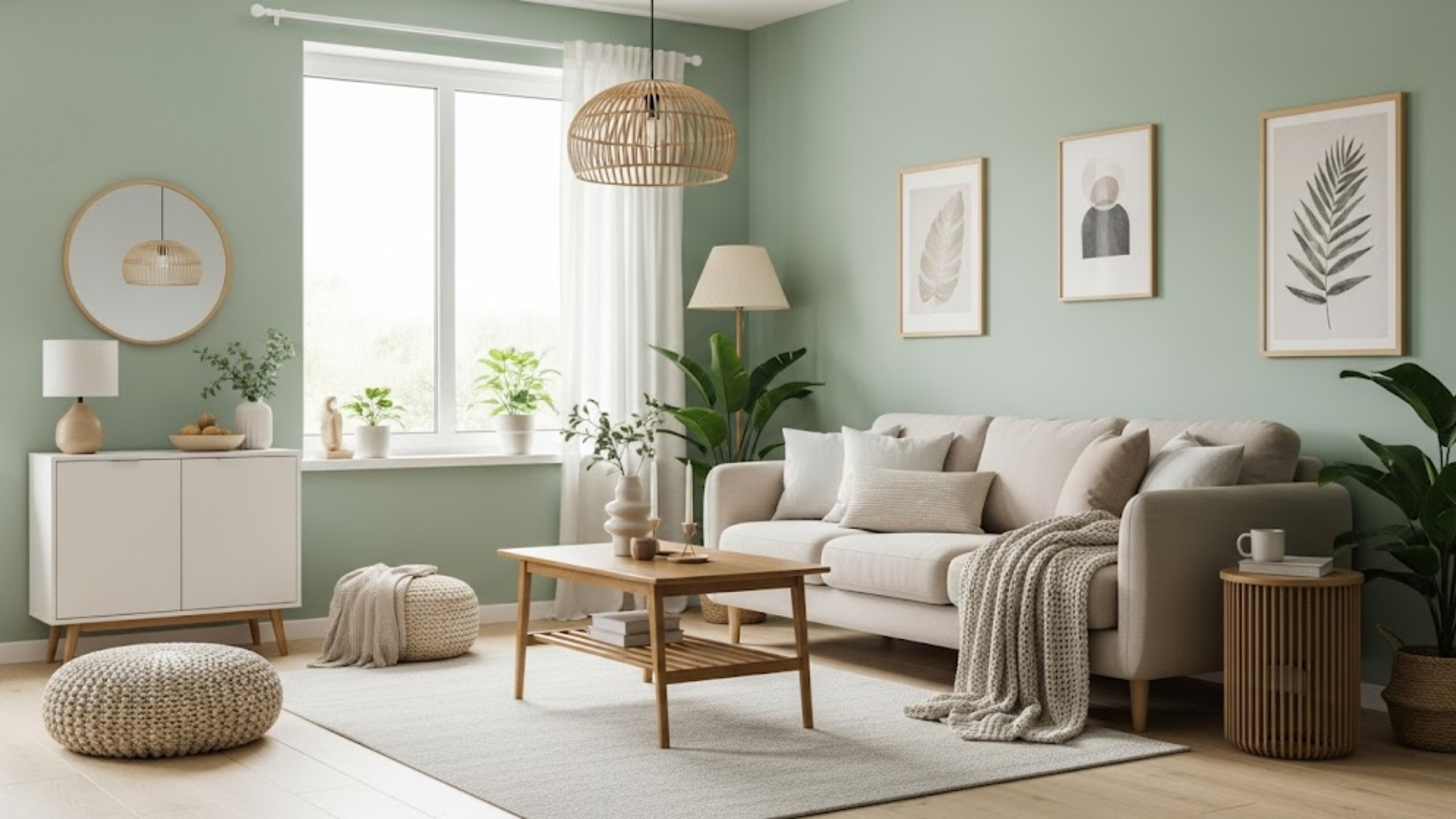
One of the easiest ways to integrate green as a neutral is by painting your walls green.
When I’ve used shades like soft sage or seafoam, it has completely transformed a space without feeling overpowering. It’s subtle but still brings enough character to a room.
Darker shades like forest green can create a rich, luxurious vibe, perfect for spaces that need a bit of drama and sophistication.
2. Green Furniture
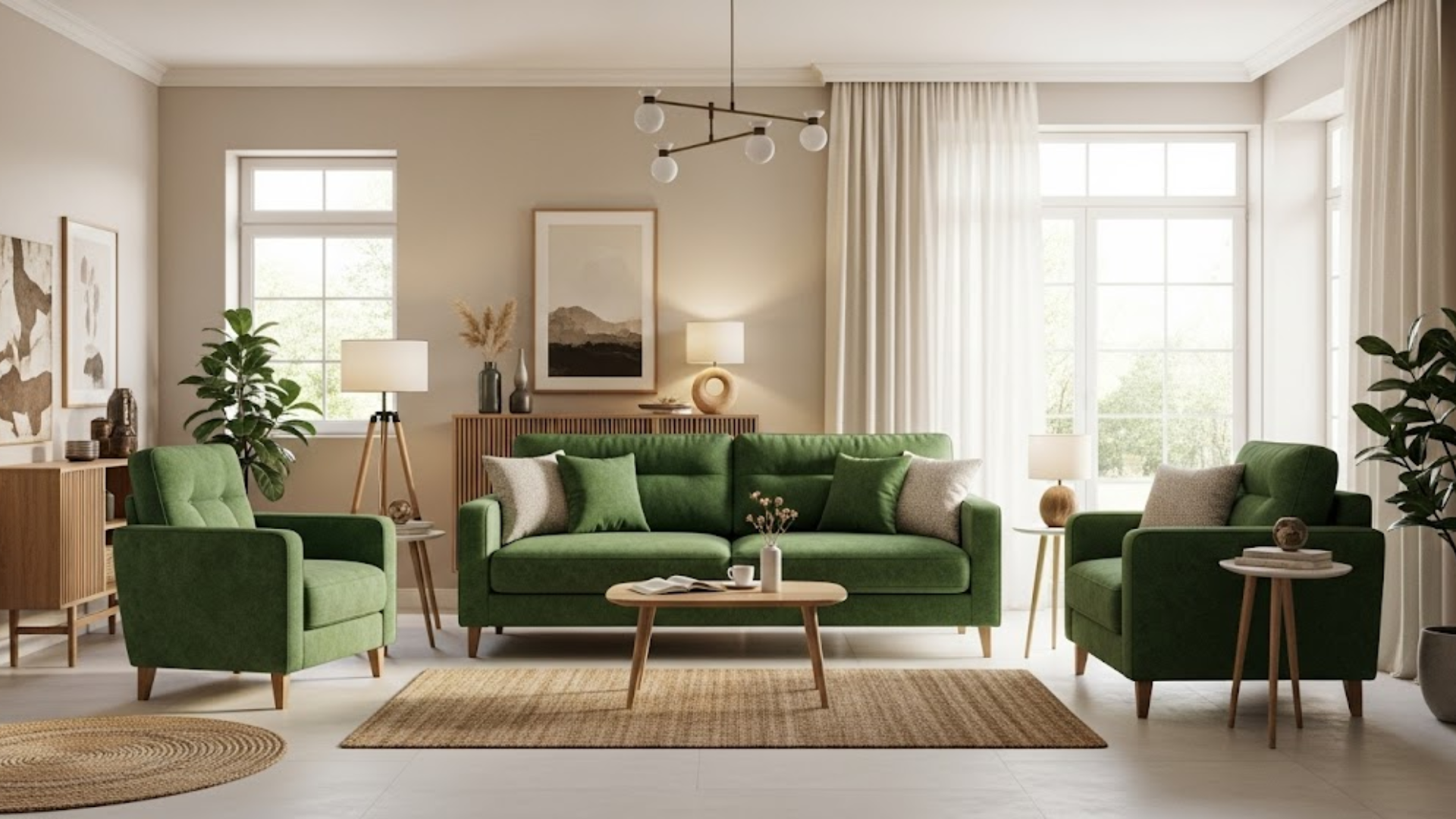
If you’re looking to add a touch of green without a major commitment, consider green furniture.
A green sofa or armchair can bring warmth and personality to a room while seamlessly blending with the rest of the design.
Whether it’s a muted olive or a bold emerald, green furniture stands out yet remains versatile, easily adapting to various color schemes for a balanced, inviting space.
3. Green in Kitchen and Dining Areas
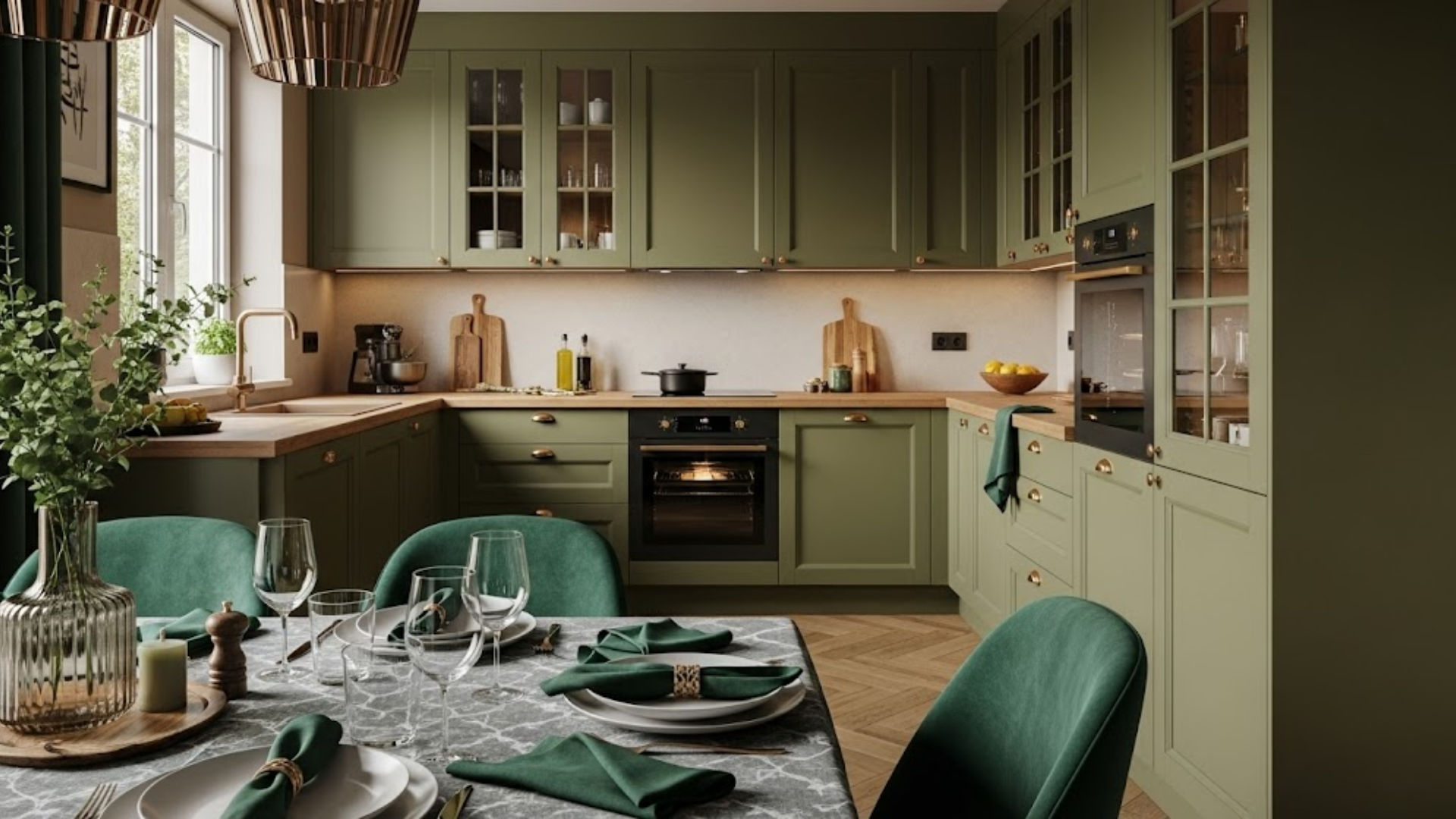
From cabinetry to smaller accents, green is making waves in kitchens and dining rooms.
Olive and sage are popular choices for kitchen cabinetry because they bring warmth and freshness without overwhelming the space.
I’ve used green in dining areas through accent chairs or table settings, and it makes the space feel inviting and natural, offering a cozy alternative to the more traditional neutral tones of beige or gray.
4. Green Accents
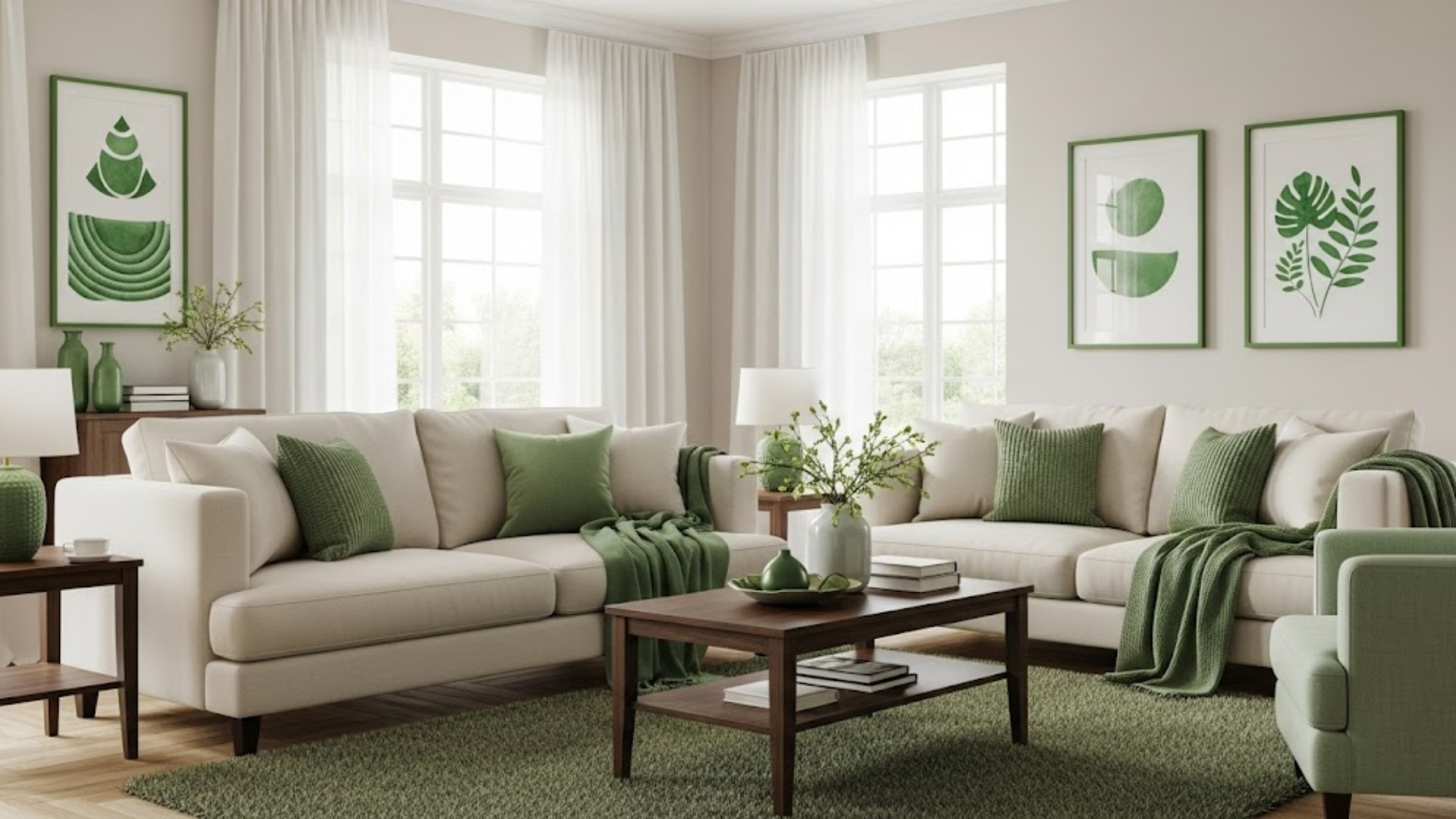
If you’re not ready to make a big commitment with green walls or furniture, start with smaller accents.
Green throw pillows, rugs, or artwork can add just the right amount of color without being too bold.
I’ve seen how a green rug can ground a space, or how green-framed artwork can tie the room together, adding depth and nature-inspired charm without overwhelming the design.
5. Bringing Nature Inside with Green Plants
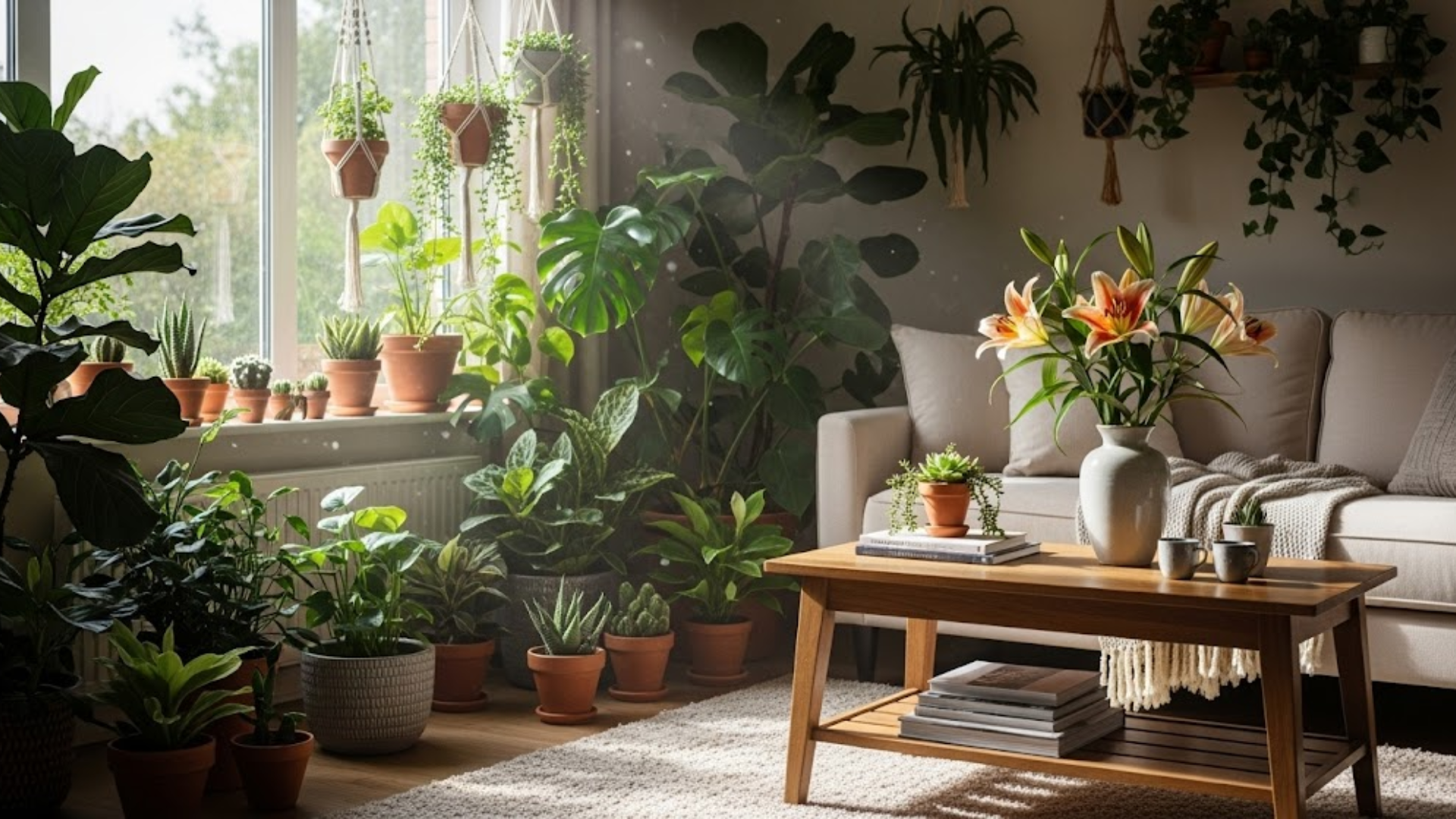
One of the most natural ways to incorporate green is through plants. Indoor greenery has always been a staple in home design, and for good reason.
I’ve always found that plants not only add color but also breathe life into a space.
No matter if you’re working with small succulents or larger plants like monstera or fiddle-leaf figs, greenery creates a calming, inviting atmosphere and pairs beautifully with any color palette.
Helpful Tips for Incorporating Green as a Neutral
- Layer Different Greens: Combine various shades of green, from deep forest to soft mint, to create depth and interest without overwhelming the space.
- Contrast with Textures: Pair green with contrasting materials like leather, metal, or wood to add texture and dimension to the room.
- Use Green Outdoors: Extend the use of green to outdoor spaces, like patios or balconies, with green-painted furniture or plants to create a seamless indoor-outdoor connection.
- Green in Art and Decor: Incorporate green into artwork, vases, or even lamps to subtly tie the room together while maintaining a neutral tone.
- Balance Bold with Neutral: If you opt for a bold green shade, balance it with neutral tones in the rest of the room to avoid visual overload.
Conclusion
I’ve come to appreciate how green can truly transform a space, offering versatility and natural appeal.
By incorporating different shades of green in furniture, decor, or accent pieces, you can create a calming and refreshing environment.
Green pairs beautifully with a wide range of textures and colors, making it easy to blend with your existing design style.
If you’re adding subtle touches or making a bold statement, green is a neutral worth embracing. It’s more than just a trend; it’s a timeless, rejuvenating choice for any home.

